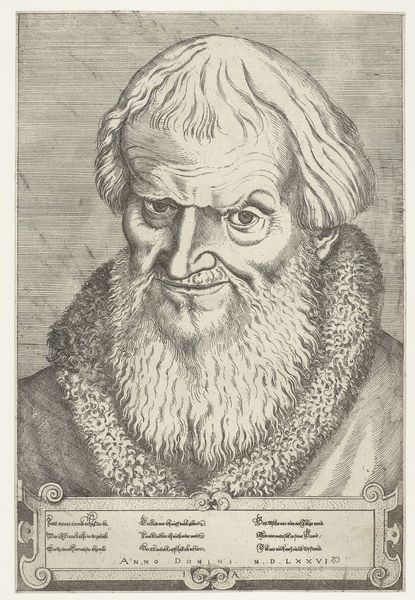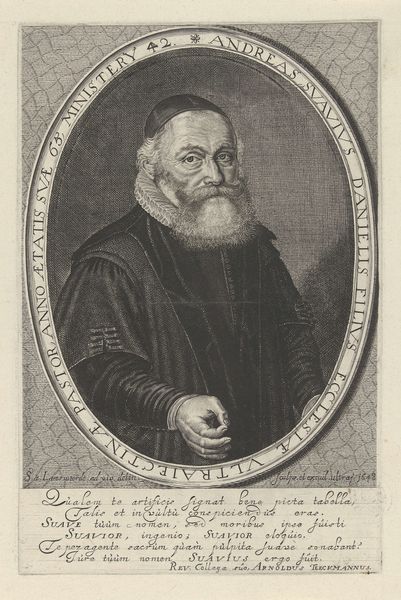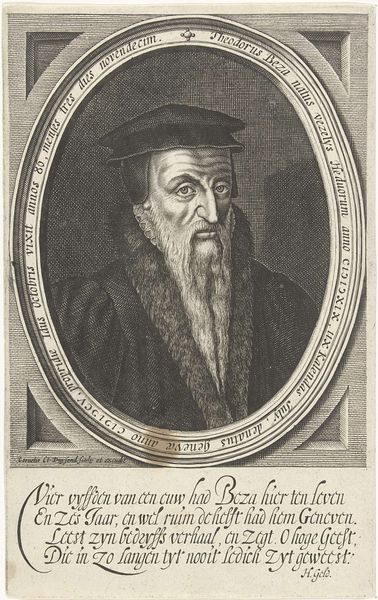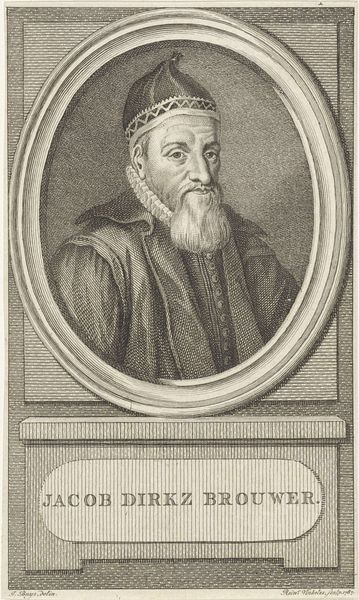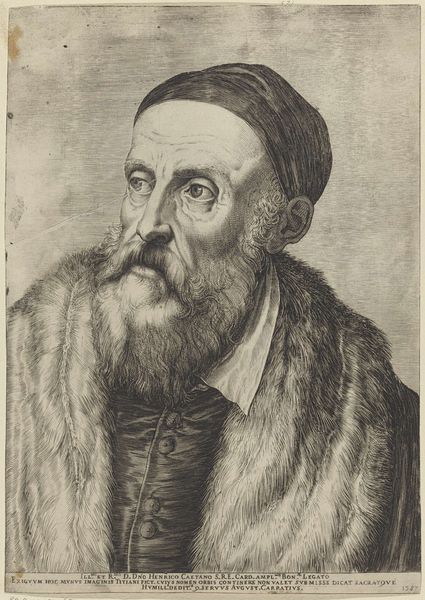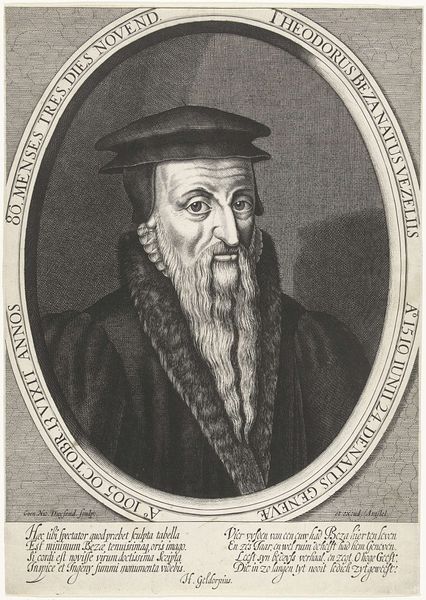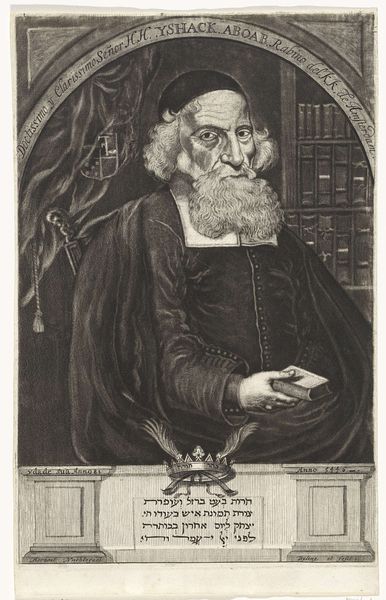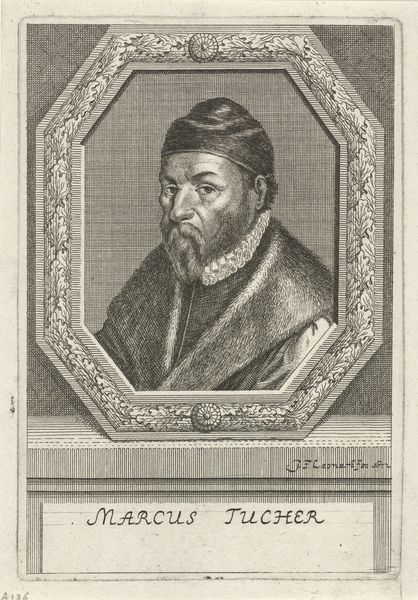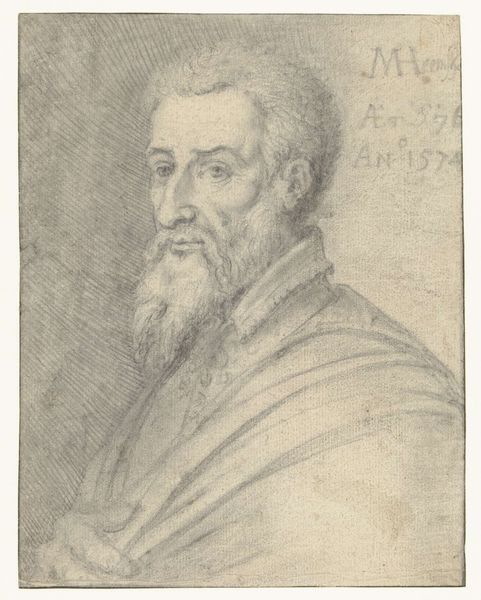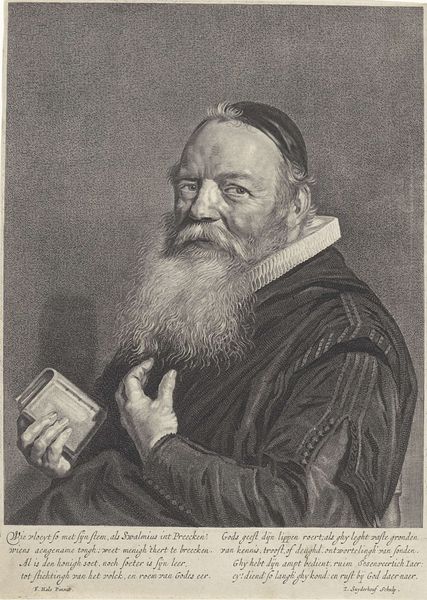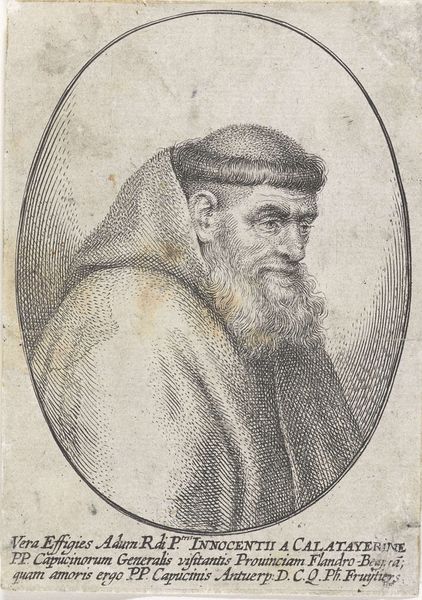
print, engraving
#
portrait
# print
#
mannerism
#
line
#
history-painting
#
engraving
Dimensions: height 257 mm, width 198 mm
Copyright: Rijks Museum: Open Domain
This is Jacob Matham’s 1636 engraving of Michelangelo, now held in the Rijksmuseum. It’s a posthumous print, made in the Netherlands, decades after Michelangelo’s death. Matham likely never met Michelangelo, so he was working from another artist’s depiction, thus raising questions of accuracy, artistic interpretation, and cultural projection. Let’s consider the institutional context of printmaking at this time. Prints like this circulated widely and played a crucial role in shaping artistic reputations. Matham’s print participated in the canonization of Michelangelo as a Renaissance master. Yet, we need to remember that the image of Michelangelo, even if it was taken from life as the inscription claims, is being mediated through another artist working in a different country and time. To fully understand this print, it is important to investigate the relationship between the Netherlands and Italy in the 17th century. Art historians use archival sources, such as letters and inventories, to understand the circulation of images and ideas across Europe at this time. Ultimately, the meaning of a portrait like this one is always contingent on its specific social and institutional context.
Comments
No comments
Be the first to comment and join the conversation on the ultimate creative platform.
